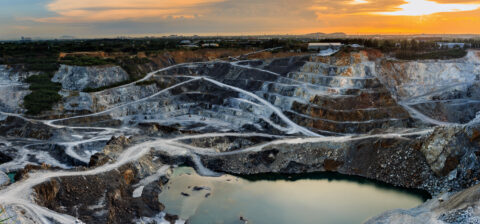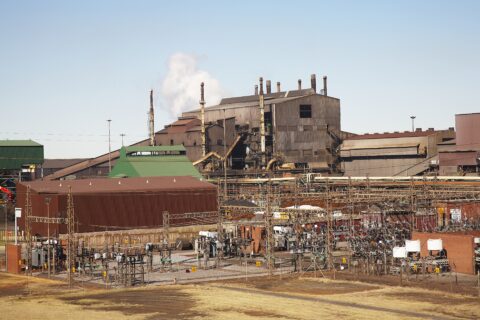SA Mining
Cloud Consideration
Now more than ever as we face the challenges posed by the COVID-19 pandemic, companies are seeking ways to drive down costs, especially mining houses, which face extensive financial pressures. Managing executive for cloud, hosting and security at Vodacom Business, Kabelo Makwane, recently shared insights into how Vodacom is able to assist mines with the adoption of cloud.
Investing in new mineral processing technologies is a priority for mining companies. Why should they consider cloud migration too?
While most established mining operations in South Africa have become deeper and more expensive to mine, new mining operations continue to be challenged by weaker commodity prices which are temporarily buoyed by the COVID-19 pandemic as capital markets prefer commodity safe havens, such as gold, in the presence of a global lockdown and uncertainty.
However commodities remain volatile and therefore there’s constant pressure to improve mining efficiencies while ensuring business continuity – especially in the wake of power outages.
For mines, cloud migration represents the opportunity to build a more resilient information technology (IT) operating environment, while allowing for flexible scale and agility, especially in scenarios described above where there may be opportunities to intermittently increase production capacity in line with cyclical market demands.
For this reason, having the capacity to quickly scale the IT operational capacity in line with increased demand without traditional heavy overheads associated with it may prove more cost-effective in the long run.
There are a lot of “cloud” options these days. How do you know which one is the most suitable for your business?
The cloud choice and journey does not have to be a complex exercise. It can begin with a simple “lift and shift” or moving the current IT infrastructure into a hosted and managed data centre.
The same IT services could be delivered more cost-effectively and with more consistent power and more access to connectivity to maintain system uptime compared to when they were housed at the mining premises.
This move represents the first step in using the managed data centre provider’s available private cloud infrastructure as a service, where the mine’s technology team can start to move some of their applications onto these private cloud infrastructures which are more modern and more scalable for their application and platform requirements.
The advantage of this is that their data and application are delivered more cost-effectively in a “pay as you grow” model albeit still on the premises.
Vodacom Business has already built partnerships and cloud management platforms with leading global hyper-scale cloud providers such as AWS, Microsoft and Google. Choosing a managed data centre service provider like Vodacom Business makes it easier for the mine’s IT team to extend their private cloud seamlessly into the public cloud and take advantage of greater scale and services as the need arises to deliver to the mine’s innovation and enterprise business requirements.
This migration where some applications may remain in the private cloud while others are run in the public cloud and consumed as SaaS (software as a service) running on PaaS (platform as a service) underlined by IaaS (infrastructure as a service) is what is typically referred to as a hybrid cloud architecture. It can be managed centrally through a cloud management platform or dashboard – even if it’s across different cloud hyper-scale providers as well.
What should one consider before making the move to the cloud? How easy is the migration process? How long does it typically take?
A good starting point for any cloud journey starts with a baseline assessment of the “as-is” IT operating environment. In a number of instances this flows into a cloud business case to ascertain how much the quantifiable benefits are in moving to the cloud.
The length of this process largely depends on the degree of complexity in the enterprise’s IT operating environment, where there are legacy applications that would require modernising before migration and the extent of the digital transformation required.
Thereafter an application migration roadmap would be designed in line with the organisation’s expected speed and ability to transform – taking into consideration the change management required for full migration scenarios.
In some more simple scenarios, an organisation might want to just adopt a cloud-based SaaS application such as Teams for collaboration, in which case it becomes a simpler deployment exercise.
Does your mine need to be of a particular size for you to consider migrating to the cloud?
Mines of all sizes can adopt cloud, and they can do so at their own speed – relevant to their enterprise requirements. In fact, in many of the newer start-up mining operations adopting cloud IT operation natively may prove to be a significant competitive differentiator in the long run. They also serve to reduce the start-up costs of operating the mine with simple SaaS applications being consumed from the very beginning.
These include productivity applications like Microsoft O365, Google Suite or Amazon Workdocs as some examples of these SaaS cloud-based applications needed to equip the knowledge worker with the requisite productivity and collaboration tools.
Do you have any cloud migration in mining success stories that you can share with our readers?
Most clients do not want to disclose the full extent of their cloud migrations publically. But we can certainly broker these interactions for mining clients wanting to adopt and use cloud services so they can learn and hear first-hand from their industry counterparts. This is part of the value we offer our clients.
Who would oversee the cloud governance for the company should they decide to move to the cloud? Would Vodacom Business manage this?
Cloud migration and governance is an integral part of how Vodacom Business delivers these projects to clients. The governance and migration would comprise a team from both the Vodacom Senior Cloud Specialist team and the Enterprise IT and Executive team, so that at any given time the IT transformation remains aligned to the desired business objectives and expected outcomes.
What would you say are some of the cloud governance best practice tips that mining companies need to be aware of?
Cloud journeys are about people, process and technology combined. These journeys must always be done with consideration for security of information and data. It is important that cloud journeys at any given point consider the impact on all four elements.
With this in mind, the mining enterprise needs to be intentional about the cloud operating model and its impact on people. The relevant process improvements must take into account the change management aspects to ensure frictionless user adoption and also what this means for the enterprise in terms of IT service management transformation and support.
Given cloud is a metered service consumed as a utility, it’s important to have a robust cloud optimisation strategy and partner beyond the migration to ensure one is consistently taking advantage of cost-effective services that can deliver high value to the mining enterprise, while providing the requisite analytics tools to ensure spending is transparently managed to avoid any monthly “bill shocks”.







 Sign-up and receive the Business Media MAGS newsletter OR SA Mining newsletter straight to your inbox.
Sign-up and receive the Business Media MAGS newsletter OR SA Mining newsletter straight to your inbox.